- en
You have found some masses or lumps on your dog. Before you panic, you need to consult with your veterinarian.
This information prescription explains some general terms used when talking about masses or lumps and describes the most commonly found ones on dogs and what to do after a diagnosis.
Quick Links
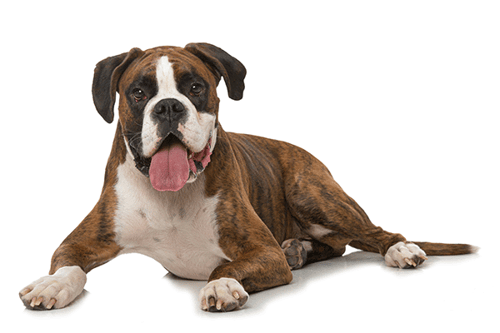
Dogs get cancer at about the same rate as humans. But cats tend to get fewer cancers. Between 20% to 40% of the tumors found on the skin are malignant (cancerous). Often they can be cured by surgical removal as long as there has been no spread (metastasis).
Our mission is to help save dogs' and cats’ lives through our educational content. To support our efforts, this page may contain affiliate links. We earn a commission for qualifying purchases – at no cost to you.
When discussing masses or tumors with your veterinarian, it is helpful to understand what each term means so that communication is clear and understandable.
Mass or Tumor: Generally, when the term mass, tumor, or lumps or bumps are used, it is often describing the actual physical appearance or swelling under the skin. Sometimes, it's in reference to a change in skin color or texture, like a mole-like marking.
Neoplasia: This term generally instills fear in people’s minds because they automatically think of cancer. So, let’s clear up a few more things. Neoplasia simply means that there is an uncontrolled and abnormal growth of cells or tissue. A neoplasm (the tumor) can be benign or malignant.
Benign neoplasia: These tumors are not cancerous or harmful. It tends to grow slowly and does not spread throughout the body.
Malignant neoplasia: These tumors are cancerous and can cause harm. They tend to be unpredictable and can spread to other parts of the body. When they spread on the body, they can invade and destroy those tissues they spread to. This is referred to as metastasis.
Metastasis: This is the spread of the tumor to other parts of the skin but also to organs such as the lungs, liver, etc. This process is not good and leads to disease.
Read the next section below for the description of different masses and how they happen.
These are the more common benign and malignant masses that are generally found on dogs. Remember benign masses or lumps are generally harmless.
The only way for a veterinarian to know if the mass is benign or malignant is to take a sample of the mass. This can be done a few different ways. First it can be done by a fine-needle aspirate, where your veterinarian inserts a needle into the mass and draws off cells for analysis. Second, your vet can surgically remove a small section of the mass and send it to a lab for analysis. Lastly, your vet can remove the whole mass and send it to a lab to be analyzed. The lab determines if the cells are benign or malignant.
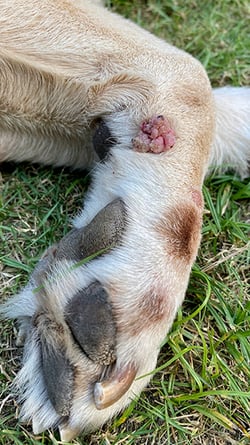
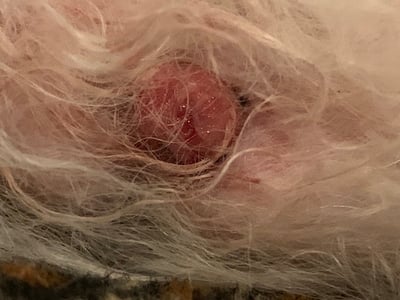
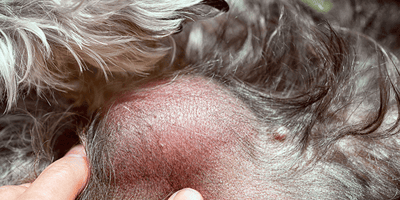
The cause of most benign and malignant masses is generally poorly understood. There is believed to be some genetic and breed predispositions as well as a thought that environmental toxins and diet may play a part. But generally, the causes usually involve many factors.
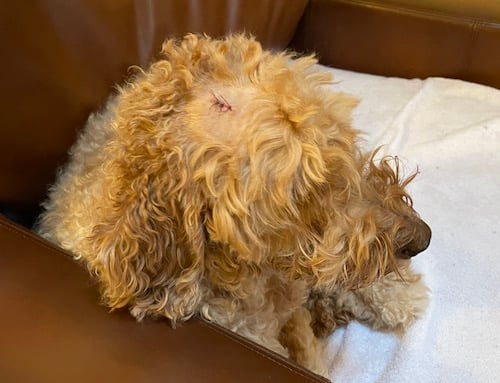 The moment you notice a mass, lump, or bump on your pet, make an appointment with your veterinarian. The sooner the issue is addressed, the sooner you will have peace of mind and the appropriate treatment can be started, which could be a "wait and see" approach, surgery, chemotherapy, etc.
The moment you notice a mass, lump, or bump on your pet, make an appointment with your veterinarian. The sooner the issue is addressed, the sooner you will have peace of mind and the appropriate treatment can be started, which could be a "wait and see" approach, surgery, chemotherapy, etc.
Some masses, such as papillomas (warts), sebaceous cysts, and histiocytomas, may spontaneously improve on their own. This requires patience of about 3 to 6 months. Just be sure that there are no changes to the mass. If there are, call your veterinarian for advice. It helps to take photos of the mass every couple of weeks to judge how it is changing and how rapidly. These photos can be sent to your veterinarian for evaluation too. They'll then let you know if your dog needs to come in for an exam and treatment.
*NOTE* Always resist the temptation to "pop” a sebaceous cyst. Not only can you cause an infection, but you can also cause your pet a lot of pain.
Some tumors may require surgical removal, especially if your dog constantly bites, licks, or chews at it or if it continuously bleeds.
The inset photo above is an example of a benign mass that was surgically removed. Read more on how to care for your dog after surgery.
How things improve depends on the type of mass that your dog has.
If a benign neoplasia happens to get infected and your veterinarian prescribes medication, you will see the redness improve, the mass may get smaller (but may not), and your pet will seem more comfortable.
If your dog had their mass removed surgically, the surgical site will decrease in redness and bruising. Your dog will continue to seem more comfortable and show fewer signs of pain.
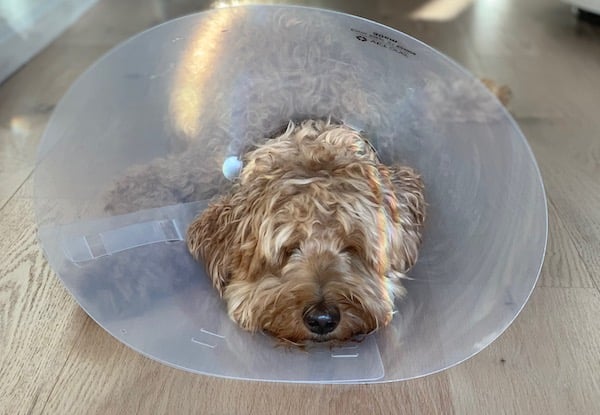
If the mass or lump continues to grow, changes appearance (gets red, ulcerated, bleeds, etc.), or your pet will not leave it alone, you need to contact your veterinarian.
If your pet had the mass surgically removed and you notice that the incision site is red, hot to the touch, continued bruising or staples/sutures are missing, you need to contact your veterinarian.

More often than not, you can’t prevent most masses, lumps, or bumps.
With sebaceous cysts, because they are caused by oily skin, some shampoos can help. Ask your veterinarian for some of their recommendations. By removing the excess oil from the skin, the glands tend to get blocked less often.
Always feed your dog a proper well-balanced diet so that your pet can maintain a good nutritional status. Avoid high-fat foods. It's also recommended to provide your dog with fish oil. Not that it will prevent masses or tumors, but it is a natural anti-inflammatory and has positive effects on the skin.
One important thing you can do weekly is a whole-body check of your pet by looking AND feeling for masses, lumps, bumps, or anything that doesn’t seem normal. If you regularly look over and feel your pet’s body, you will begin to know what is normal, and anything abnormal will be obvious quickly. The sooner you address any issues, the sooner diagnosis and treatment can be started.
If your dog is groomed by a professional regularly, they will hopefully alert you to anything abnormal, but it's still important to keep tabs on your dog's skin. Between you, your vet, and your groomer, you should be able to catch any abnormalities early.
The Pet InfoRx® is made possible, in part, through our partnership with AlignCare®.
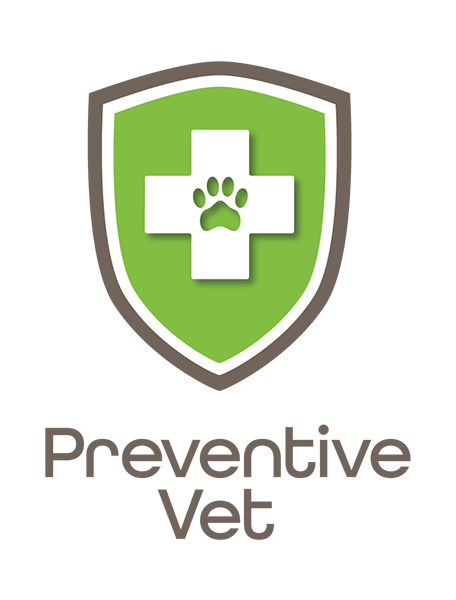

© Preventive Vet. All rights reserved. PreventiveVet.com
